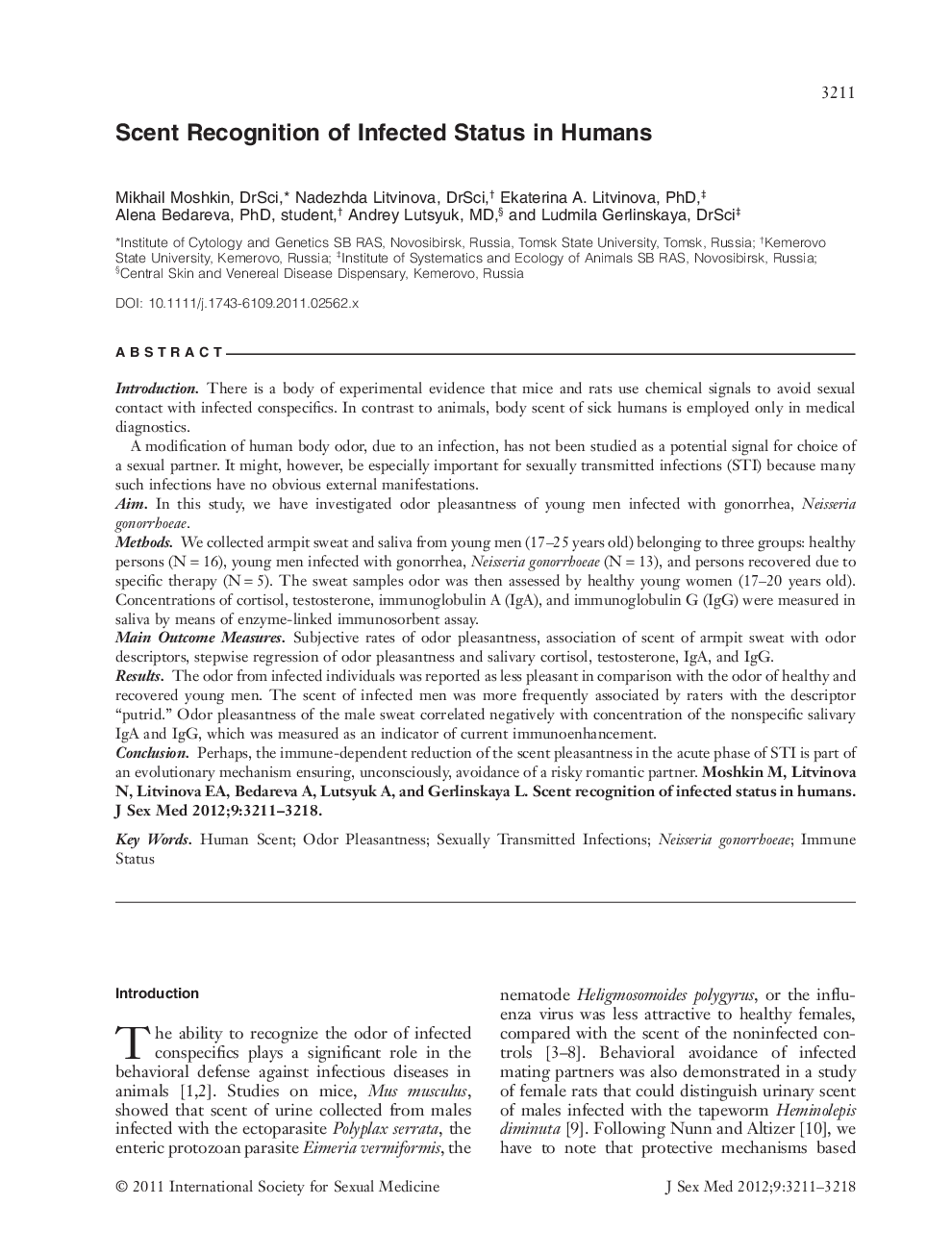| Article ID | Journal | Published Year | Pages | File Type |
|---|---|---|---|---|
| 4270876 | The Journal of Sexual Medicine | 2012 | 8 Pages |
ABSTRACTIntroductionThere is a body of experimental evidence that mice and rats use chemical signals to avoid sexual contact with infected conspecifics. In contrast to animals, body scent of sick humans is employed only in medical diagnostics.A modification of human body odor, due to an infection, has not been studied as a potential signal for choice of a sexual partner. It might, however, be especially important for sexually transmitted infections (STI) because many such infections have no obvious external manifestations.AimIn this study, we have investigated odor pleasantness of young men infected with gonorrhea, Neisseria gonorrhoeae.MethodsWe collected armpit sweat and saliva from young men (17–25 years old) belonging to three groups: healthy persons (N = 16), young men infected with gonorrhea, Neisseria gonorrhoeae (N = 13), and persons recovered due to specific therapy (N = 5). The sweat samples odor was then assessed by healthy young women (17–20 years old). Concentrations of cortisol, testosterone, immunoglobulin A (IgA), and immunoglobulin G (IgG) were measured in saliva by means of enzyme‐linked immunosorbent assay.Main Outcome MeasuresSubjective rates of odor pleasantness, association of scent of armpit sweat with odor descriptors, stepwise regression of odor pleasantness and salivary cortisol, testosterone, IgA, and IgG.ResultsThe odor from infected individuals was reported as less pleasant in comparison with the odor of healthy and recovered young men. The scent of infected men was more frequently associated by raters with the descriptor “putrid.” Odor pleasantness of the male sweat correlated negatively with concentration of the nonspecific salivary IgA and IgG, which was measured as an indicator of current immunoenhancement.ConclusionPerhaps, the immune‐dependent reduction of the scent pleasantness in the acute phase of STI is part of an evolutionary mechanism ensuring, unconsciously, avoidance of a risky romantic partner. Moshkin M, Litvinova N, Litvinova EA, Bedareva A, Lutsyuk A, and Gerlinskaya L. Scent recognition of infected status in humans. J Sex Med 2012;9:3211–3218.
